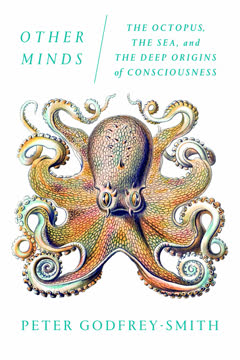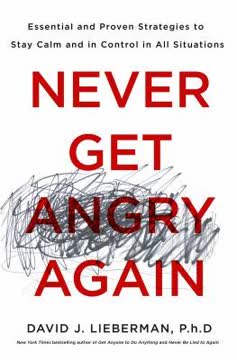Key Takeaways
1. Physical intelligence: The foundation of human cognition and action
Physical intelligence is foundational, a kind of knowing that frames much of what the mind spends its time engaged in.
Unconscious yet crucial. Physical intelligence operates largely beneath our conscious awareness, enabling us to navigate and interact with the world effortlessly. It encompasses our ability to sense surfaces, avoid obstacles, maintain balance, and perform complex physical tasks without constant deliberation.
Evolutionary advantage. This form of intelligence has been honed over millions of years of human evolution, allowing our ancestors to survive and thrive in challenging environments. It's what enabled early humans to hunt, gather, and explore new territories.
Broader impact. Physical intelligence doesn't just affect our movements; it shapes our perception, decision-making, and even abstract thinking. The way we understand and interact with our physical environment forms the basis for more complex cognitive processes.
2. Body schema: Our dynamic mental representation of physical self
At any given moment, a healthy brain integrates all available sensory information to create a single connected and locally smooth map of the entire body.
Adaptive self-image. Our brain maintains a constantly updated model of our body's position, size, and capabilities. This body schema is remarkably flexible, adapting to changes in our physical state or even incorporating tools as extensions of our body.
Multisensory integration. The body schema is created by combining information from various senses:
- Proprioception (sense of body position)
- Touch
- Vision
- Vestibular system (balance)
Clinical insights. Disorders affecting the body schema, such as phantom limb syndrome or alien hand syndrome, provide valuable insights into how our brain constructs our sense of self and physical presence in the world.
3. Affordances: How we perceive action possibilities in our environment
Affordances are the opportunities, derived from surfaces, that can be acted on.
Direct perception. We don't just see objects; we perceive potential actions. A chair affords sitting, a cup affords grasping and drinking, a staircase affords climbing. This perception is often immediate and doesn't require conscious deliberation.
Individualized perception. Affordances are relative to the perceiver's capabilities. A small ledge might afford stepping for an adult but not for a toddler. As we develop new skills or use tools, we perceive new affordances in our environment.
Neural basis. Research has identified specific brain regions involved in perceiving affordances, particularly in the parietal and premotor cortices. These areas integrate visual information about objects with our motor capabilities to generate potential actions.
4. Reference frames: Navigating and understanding our spatial world
The brain routinely combines vision, touch, and positions of the joints to make a volume around the body.
Multiple frames. We use various reference frames to understand and navigate space:
- Egocentric (centered on self)
- Allocentric (centered on external landmarks)
- Grid-based (abstract spatial representations)
Flexible switching. Our brain can seamlessly switch between these reference frames depending on the task at hand, allowing us to navigate complex environments and perform intricate physical tasks.
Neural correlates. Different brain regions are associated with different reference frames. For example, the hippocampus is crucial for allocentric mapping, while the parietal cortex is involved in egocentric representations.
5. Problem-solving through physical engagement and tool use
Any object can become a tool once it is associated with an action and a problem that can be solved.
Embodied cognition. Physical interaction with our environment is a form of problem-solving and learning. By manipulating objects and exploring our surroundings, we develop a deeper understanding of the world and our capabilities within it.
Tool use evolution. The ability to use and create tools has been a crucial driver of human cognitive evolution. It requires:
- Understanding of physical causality
- Mental simulation of potential actions
- Fine motor control
- Integration of tools into our body schema
Neural plasticity. Engaging in complex physical tasks and tool use promotes neural plasticity, helping maintain cognitive function throughout life and potentially offering protective effects against cognitive decline.
6. Fatigue and perseverance: The mind's role in physical endurance
Fatigue is an emotion that is used to regulate both intensity and expenditure over some underlying period of time so that you can reach a particular goal with some reserve and without injury.
Cognitive component. Fatigue is not just a physical state but also a cognitive one. Our perception of effort and exhaustion is influenced by mental factors such as motivation, expectation, and past experiences.
Protective mechanism. The feeling of fatigue serves as a protective mechanism, preventing us from pushing our bodies beyond safe limits. However, this system is often overly cautious, allowing for significant reserves of energy and capability.
Overcoming limits. Through training and mental strategies, we can learn to push beyond our perceived limits of fatigue. This involves:
- Setting clear goals
- Managing expectations
- Developing mental toughness
- Using positive self-talk and visualization
7. The unity of mind and body in physical intelligence
Insofar as physical intelligence is concerned, the distinctions between mind and body are illusory.
Holistic approach. Physical intelligence challenges the traditional mind-body dualism, demonstrating that our cognitive processes are deeply intertwined with our physical experiences and capabilities.
Implications for well-being. Recognizing the unity of mind and body has important implications for health and well-being:
- Physical activity can enhance cognitive function
- Cognitive strategies can improve physical performance
- Engaging in complex physical tasks can promote overall brain health
Future directions. As we increasingly live in artificial, urban environments, finding ways to engage our physical intelligence becomes crucial for maintaining cognitive health and overall well-being. This may involve:
- Designing environments that challenge our physical and cognitive abilities
- Promoting activities that integrate physical and mental engagement
- Developing technologies that enhance rather than replace our physical interactions with the world
Last updated:
Review Summary
Physical Intelligence receives mixed reviews, with an average rating of 3.64 out of 5. Some readers praise Grafton's exploration of the mind-body connection, his personal anecdotes, and the book's accessibility. They appreciate the insights into neurological processes and physical movement. However, others criticize the book for being overly simplistic, boring, or difficult to understand. Some reviewers found the hiking narrative distracting, while others enjoyed it. A few readers expressed disappointment with the book's handling of ADHD and its lack of practical applications.
Similar Books










Download PDF
Download EPUB
.epub digital book format is ideal for reading ebooks on phones, tablets, and e-readers.




